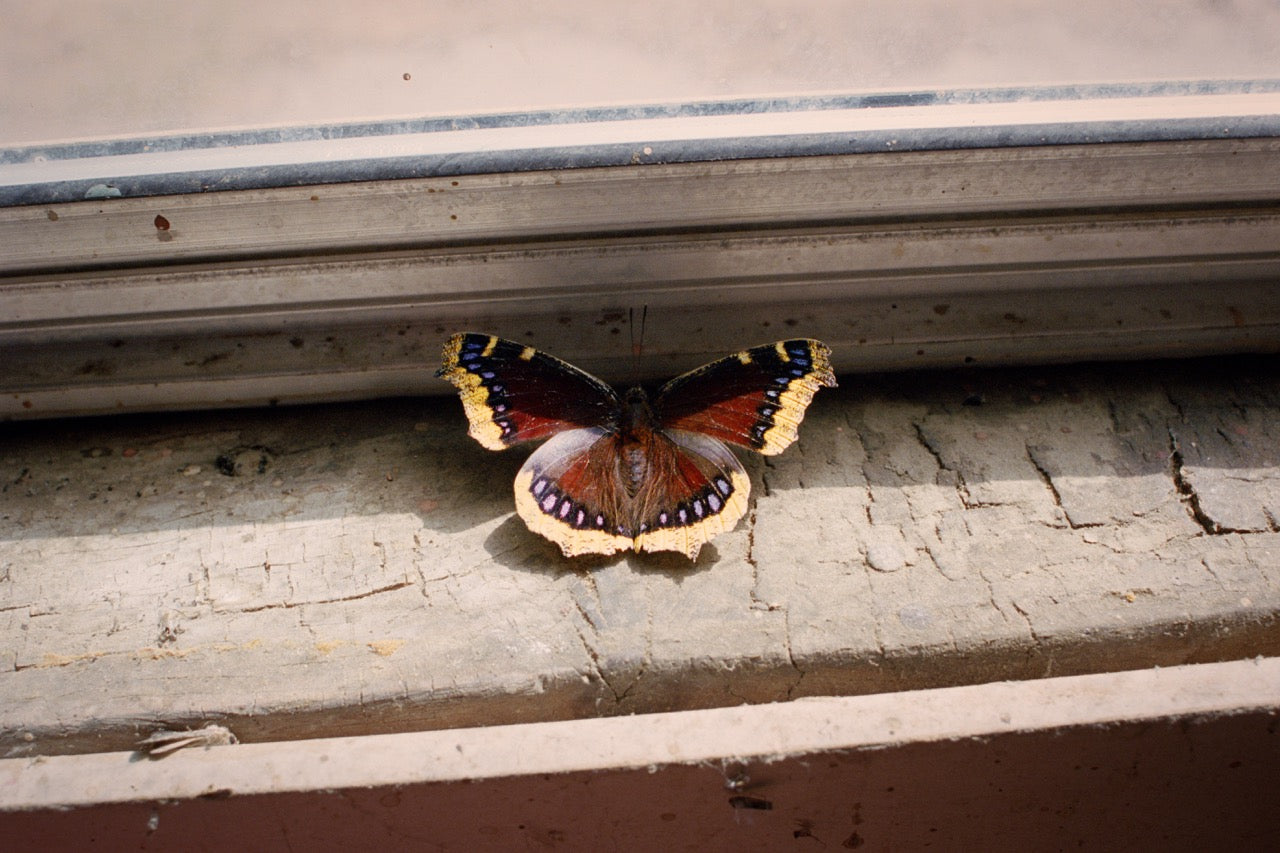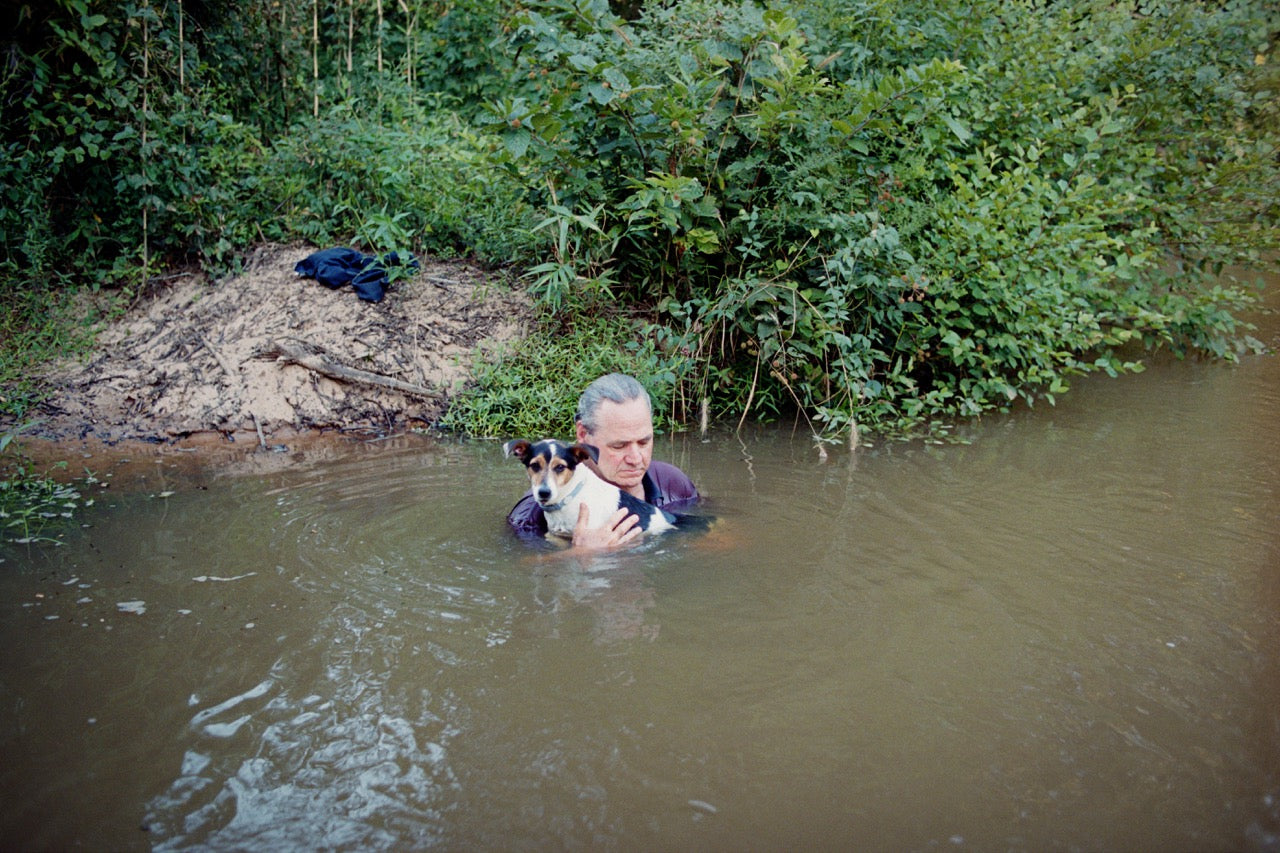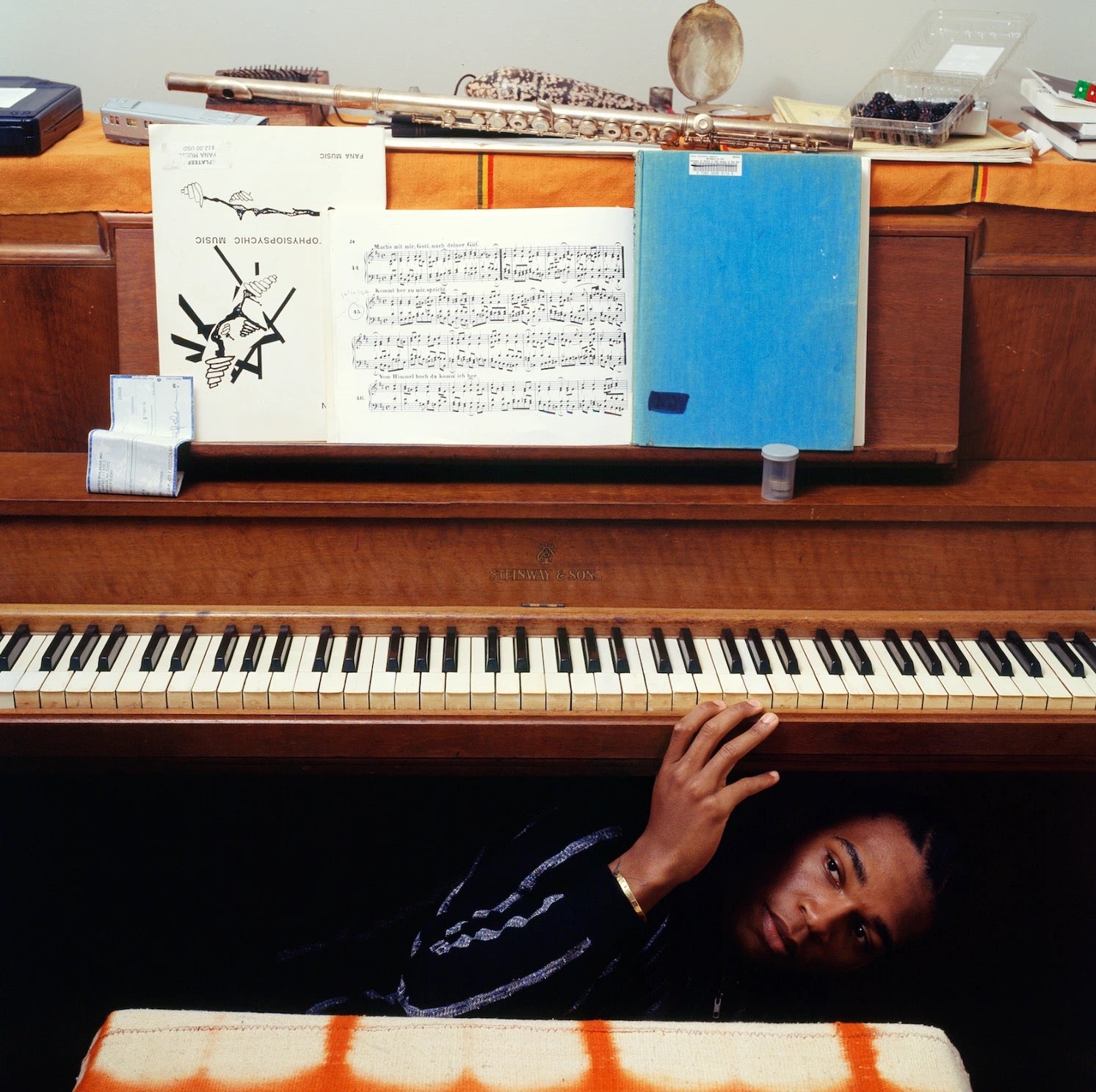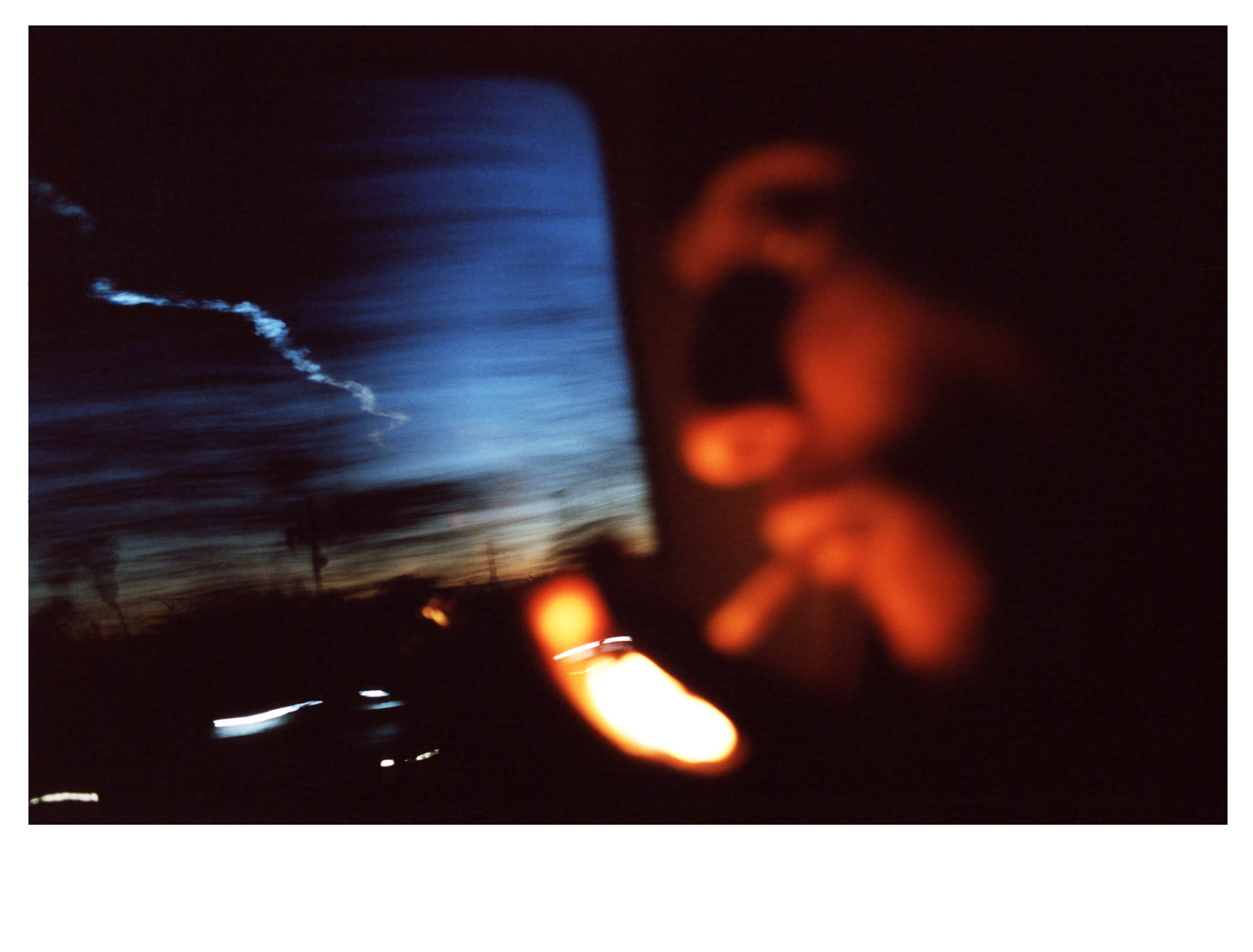
Photography by Mike Brodie for Blue Moon, Issue 9
Author
Holly Connolly
Published
August 20, 2025
In 2015, Leah Gudmundson quit her job as the arts and music writer at Purple Magazine and launched Blue Moon. In the ten years since, Blue Moon has evolved from a zine-like publication, which Gudmundson juggled alongside assisting different artists, to a full-time operation, complete with major fashion advertisers. Along the way, the magazine’s original ethos has remained unchanged: to focus on the margins and the previously uncovered. From emerging names, to unexpected angles on established figures like Wim Wenders and Gus Van Sant, every figure featured in the magazine offers a fresh insight into creative practice.
Originally from Saskatchewan, in Canada, Gudmundson moved to Vancouver to study art history and cinema at The University of British Columbia before relocating to Paris, where she is currently based. Her trajectory could be read as the product of a series of chance encounters: early friendships igniting creative interests, an internship at Purple leading to a will to start her own venture, and her time working closely with artists helping open up creative worlds to her. “It’s almost like a string of serendipity, which is lovely for me because I’m a really magical thinker and I put a lot of emphasis on things happening in a certain way,” says Gudmundson. “I floundered a lot in my early twenties, questions like: What do I want to do in my life? How do I make money? But I’ve always been interested in magazines and books.”
Here she discusses her route, the evolution of the magazine, and why she loves freaks.
What do you think made you interested in creative realms?
I often wonder about that, because my family wasn't super creative. My dad was a train driver, a conductor for the Canadian National Railway, and then my mum worked in the hospital as a laboratory technologist. On my mum’s side, every single person in my family is a teacher working for the school system in Saskatchewan, and they all stayed in Saskatchewan.
Embarrassingly enough, I think it was my high school boyfriend who led me into that realm. We started dating in the ninth grade, when I was about 15 years old, which was very formative. He was really into music and film, and I was a nerd, a heavy reader who burned through so many books a month. Finding the few like-minded people in our high school was important too, we became a little crew.
I know you worked at Purple, what other jobs did you have before starting Blue Moon?
I actually started Blue Moon when I quit Purple, in 2015, and at the beginning it was really more like a zine. The first two issues were very minimal: a lot of full-page images and only a small amount of text. Throughout that period the magazine was more like a hobby, but over the years it's become full-blown.
All my jobs have been as an assistant to different artists, including Katerina Jebb, who I worked for for many years. She was actually very formative in Blue Moon, because she was super generous with her contacts and she really believed in me. That was incredibly helpful, because she's been around for so long in the Paris scene that she really knows everyone.
Her belief in me made me believe that it could be something more
You said that it started as a zine, do you think her support helped to professionalise Blue Moon?
In the same way that my high school boyfriend was a formative person, she definitely was in the early days. I think her belief in me made me believe that it could be something more. So Katerina was in my first issue, and then she introduced me to one of my idol filmmakers, Alejandro Jodorowsky, who made El Topo, The Holy Mountain, these cult films. He lives here in Paris, and she very generously introduced me to him, and so I interviewed him in the second issue.

Photography by Mike Brodie for Blue Moon, Issue 9
Blue Moon was really about an appreciation of people who I love
And why did you start the magazine?
When I was at Purple, the people that they were interviewing tended to be more mainstream or established. At that time, I had a bunch of friends who were starting to do interesting things, and Olivier [Zahm] then began wanting to interview them. It made me realise that I have all these special people who have meant a lot to me in my life, and that I could find some way to feature their work myself. So Blue Moon was really about an appreciation of people who I love, who are very talented, who I felt lucky to have met. The name Blue Moon is from an Elvis song, but it's also derived from the idea that ‘once in a blue moon’ something special will happen, or something rare. It’s about rare encounters or lucky stars.
Now you’re in your tenth issue. Looking back, how do you think the magazine has changed and evolved? And how have you sustained working on it?
After the fifth issue I had a little stint being a managing editor at a different magazine, but I realised it was taking all of the energy that I wanted to put into Blue Moon. That's when I finally decided to quit working other jobs. I was complaining to a friend, “How am I going to get money to sustain myself?” She said, “Get advertising for the magazine.” I had never thought that was even possible, because it’s such a little endeavour, but she said, “Just shoot your shot. Ask for a lot of money.” So I did. Our first advertiser was Supreme, and I think that helped a lot in terms of attracting other brands. I had one advertisement in the sixth issue, and then the next issue I had three, and then in the eighth issue I had five, and now I have six. It’s a slow build, it takes hundreds of emails, and it's a delicate thing to try and do with integrity.
I think because of the way that a lot of disciplines have developed alongside commercialisation, advertising doesn’t really carry the same connotations. It’s quite common now for really respected artists and writers to work with brands, or even internally within the brand.
For sure, it's not as church and state, it's more melded together. So I’ve been able to scrape by with my advertisers, and then my plan is to keep doing the magazine twice a year. Then I'm also starting an publishing arm for artist’s books, Blue Moon Press. I'm doing my first monograph with Gus Van Sant, the filmmaker, but it’s a book of his paintings. Somehow I stumbled upon the fact that he was a painter, and he was also featured in Blue Moon via a friend of a friend. We kept in contact and so I asked him, “Would you ever want to do a book of your paintings?” He said, “Yes, I have hundreds in storage that have never seen that light of day.” We went to Los Angeles in March and documented about 250 paintings to make the book.

Photography by Devlin Claro for Blue Moon, Issue 9
It's interesting to hone in on one artist in a deeper fashion
Why did you decide you wanted to sort of move into monographs?
I love books, and I think it's interesting to hone in on one artist in a deeper fashion, and see the breadth of their work. It’s also honestly easier for me to manage, because when I'm dealing with ten people over six months for a magazine, it's a lot of juggling around. With just one artist it's more of a zoomed in process.
How did this latest issue of the magazine come together?
People often ask me, “Does each issue have a theme?” And generally, no. It’s not like, “Oh this is the Los Angeles issue.” But as I said, I’m really into these kinds of rare and magical things that happen serendipitously. I’m not a religious person, but I love ideas about the cosmos, or even scientifically the idea of the universe as a conscious entity. I like tapping into those things. What I find with each issue is that, somehow, at the end there is a thread. This issue, for instance, across the people we featured, there was a lot of spiritual talk, but in completely different ways. Maybe someone was actually Christian, with someone else it was more that they feel there are spirits that have intervention in their work, and then someone is searching for meaning.
As far as the subjects go for each issue, I always research and contact about half of the people myself, and then half of the people come to me. The main subject in this issue was [the photographer] Mike Brodie. He was a trainhopper in the early 2000s and I had first stumbled upon his photographs when I lived in Vancouver when I was 19. He had made these gorgeous Polaroids of his time hopping trains across America; photographs of really unique characters who were sleeping on the side of the train tracks and similar. After that, Brodie disappeared for ten years. He didn't publish any photographs, he didn't put anything out. Then just last year he resurfaced with this huge photography monograph of his life. He had quit trainhopping and become a diesel mechanic in Florida. This new monograph is a ten year opus of his life; still traversing America, but this time as a mechanic in a car.
Brodie’s life has this crazy lore around it. It’s very dense and heavy, and he’s had a lot of deaths around him. In the interview we featured, which was so interesting, he said he believes that he attracts people or things that are on the edge of going out; either a person who is somehow on their way out, or an object that's going to become futile. So he was someone I had been aware of early in my life, and then I noticed the book and I thought, ‘I have to reach out to him!’

Photography by Fin Wells for Blue Moon, Issue 9
I love and search for people with funny little twinkles in their eye
Brodie believes he attracts people on their way out. Do you think there's any person or thing that you attract, or that you're attracted to?
For lack of a better term, a freak. A true freak, which I think is kind of rare these days. The thing that I look for, or maybe attract, is a twinkle in the eye. There’s a huge spectrum of the twinkle, but I love and search for people with funny little twinkles in their eye; you see them and think, ‘Who is that person?’
Really, the magazine is about the people. I think something that I love about it, and that I will always try to do, is to feature people who don't yet have a light shone on them. So many artists right now can get swept under the carpet if they're not good at self-promotion. Or I like to work with someone who's more established, but try to find the thing they do that's not known. The people on the margins who create something unique at any point in their career, or personal past, that's the main focus of what I do.




